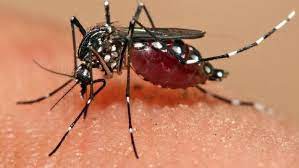Monogamy as we know exists only in humans. while their
animals are free and not tied to their partners. They are free to exchange
partners at any time. But apparently that's not always the case. Apparently
there are also animals that are loyal to their partners throughout their lives.
Quoted from
thought co dot com, These are 5 animals that are monogamous with their
partners. But before continuing, don't forget to subscribe to this channel.
1. Swans - Symbols of True Love
Two swans
touching beaks—it's the universal symbol of true love in the animal kingdom.
And as it turns out, it really does indicate true love—or at least that's what
humans would call it. Swans form monogamous pair bonds that last for many
years, and in some cases these bonds can last for life.
Romantic?
Sure, but swan pairs are more a matter of survival than love. When you factor
in the amount of time swans need to migrate, establish territories,
incubate, and raise their young, it makes sense that they wouldn't want to
waste any extra time attracting a new mate each season.
2. Wolves - Loyal for Life
These sly
old dogs are not as independent as you might think. Lone wolf stereotypes
aside, most wolf "families" consist of a male, a female, and their
pups. Just like a human family.
Alpha males
share dominance within the pack with their alpha female, except during mating
season, when the alpha female is in charge.
3. Albatross - Always Faithful
Many bird species mate for life, but albatross take things up a notch by learning advanced moves to keep the
romance alive with their mate. From a young age, albatrosses learn how to
woo their mates using an elaborate system of preening, pointing, rattling,
bowing, and dancing. They may try these moves out with many partners, but once
they pick "the one," they are faithful mates for life.
4. Gibbons - Maybe Faithful, Maybe Not
Gibbons are our
closest animal relatives that mate with their partners for life. Males and
females are roughly the same size, making grooming and relaxing together a
comfortable fit. New research shows that there may be some philandering going
on within gibbons packs, but overall, pairs stay together for a lifetime.
5. Prairie Voles - Romantic Rodents
Most rodents are
not monogamous by nature, but prairie voles are the exception to the rule. They
form lifelong pair bonds with their partners and spend their lives nesting,
grooming, mating with, and supporting their mates. In fact, they are often used
as the model for faithful monogamous relationships in nature.





























